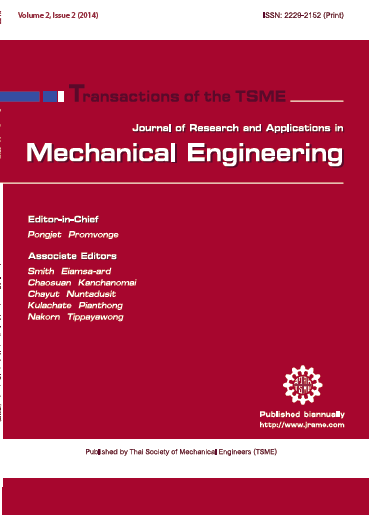VISUALIZATION OF FLOW THROUGH TWO OBSTACLES USING HYDROGEN BUBBLE TECHNIQUE
Main Article Content
Abstract
The present work deals with the experimental investigation of a fully developed channel flow through two obstacles using hydrogen bubble technique. The description of experimental apparatus including their coordinates is facilitated by reference to Fig. 1. The results of variation of pitch ratios on mean velocity profiles were taken in Fig. 2(a-c). It can be noted that the inlet flow conditions remain laminar as suggested by the parabolic mean velocity profiles at x = -20 mm. The velocity profiles between both obstacles locations are shown negative velocities, implying that a flow separation takes place behind the first obstacle. At x = 0.0, it shows the mean velocity profiles on the top of the obstacle are asymmetric and indicate a significant velocity profile close to the obstacle is much steeper than that to the top wall of the channel. The recirculation zone between two obstacles can be observed from the velocity profiles of PR = 2.5 at x = 20, 40, 60 and 80 mm in Fig. 2(a) and PR = 3.75 and 5 at x = 20, 40, and 60 mm in Fig. 2(b-c). It can be seen that the shorter pitch length is used the longer recirculation zone occurs. It is found that the recirculation after the first obstacle is greater than that behind the second one.
Article Details
This work is licensed under a Creative Commons Attribution-NonCommercial-ShareAlike 4.0 International License.



